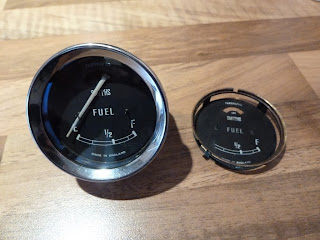Now that I have settled into my new workshop, come shipping container, known as "The Oven" and with temperatures closer to the norm for this time of year, I am spending as much time as possible to keep pushing on with the restoration of my MG Midget.
My attention is focusing on the offside rear bulkhead area which has some of the worst rust damage on the car. Starting here will allow me to rebuild the panels working forwards to the footwell.
The spring hanger area is particularly bad as there has been sufficient water penetration between the panel joins that more and more metal needs to be replaced. But I have got to the point now that nothing is phasing me on this project. It is just going to take longer to fix this and more cost for replacement panels. Nobody said it was going to be easy!
These photos give you an idea of what I am dealing with! The closer you get to the inner sill the less metal there is remaining. I have purchased the rear bulkhead repair panels and the spring hanger section. Having these helps me with measurements and my confidence as they seem to have been made well and look like they will fit in perfectly.
I am certainly now getting closer to welding in my first panel which will be the bulkhead kick board as shown. I have marked out the welding line on the above panel and on the repair panel, leaving a 2mm gap for the weld.
There is still some preparation work to be done in cleaning the metal of old underseal and applying rust converter to stop the rust from damaging my MG any further.
I am really looking forward to getting my first panel welded in as I really don't want to be cutting any more metal off this chassis.

































































